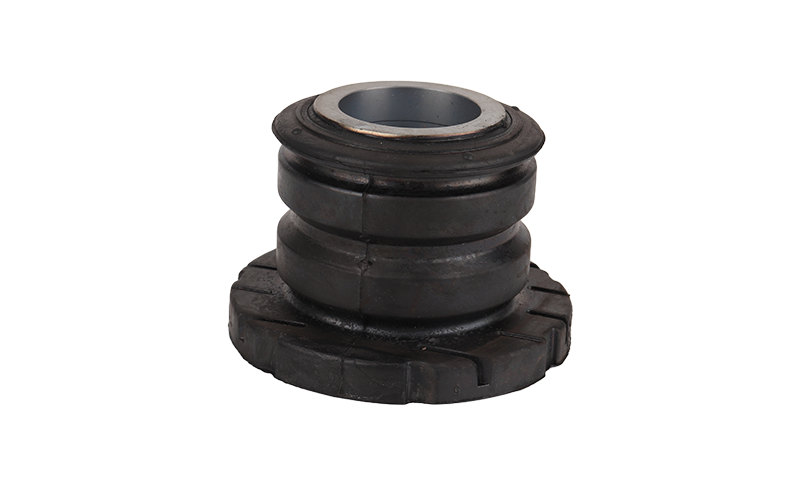Automobile Rubber Bushings: The Silent Heroes of Vehicle Suspension
The Significance of Automobile Rubber Bushings
Automobile rubber bushings are small cylindrical components made from rubber and metal, often found in various locations within a vehicle's suspension system. Their primary function is to provide a flexible yet durable connection between two moving parts. This flexibility allows for controlled movement while minimizing the transfer of vibrations and noise to the vehicle's cabin.
Types of Automobile Rubber Bushings
Control Arm Bushings: These bushings connect the control arms to the chassis and allow for the controlled movement of the suspension. They play a pivotal role in maintaining stability and handling, especially during cornering and braking.
Sway Bar Bushings: Sway bar bushings secure the sway bar (also known as the stabilizer bar) to the chassis of the vehicle. They are essential for reducing body roll and improving cornering performance.
Shock Absorber Bushings: These bushings are located at the top and bottom of the shock absorbers or struts. They help isolate the cabin from road vibrations and impacts, ensuring a comfortable ride.
Engine Mount Bushings: Engine mount bushings secure the engine to the vehicle's frame or subframe. They minimize engine vibrations and noise, preventing them from being transferred to the passenger compartment.
The Importance of Regular Maintenance
Vibration Isolation: Rubber bushings are designed to absorb and dampen vibrations and shocks from the road, providing a smoother ride. Over time, these bushings may wear out, reducing their ability to isolate vibrations, which can result in a rougher and noisier ride.
Handling and Stability: Control arm and sway bar bushings are critical for maintaining proper handling and stability. Worn bushings can lead to imprecise steering, increased body roll, and reduced overall control, potentially compromising safety.
Comfort: Shock absorber and engine mount bushings contribute significantly to ride comfort. Damaged or deteriorated bushings can result in increased noise, harshness, and discomfort in the cabin.
Safety: Properly functioning bushings are essential for vehicle safety. Any compromise in handling, steering, or suspension can lead to unpredictable vehicle behavior and potentially hazardous situations.
Signs of Worn or Damaged Bushings
It's essential to be aware of the signs that your vehicle's rubber bushings may be worn or damaged. Common indicators include:
Excessive Noise: Clunking, squeaking, or knocking sounds, especially when going over bumps or during turns.
Vibration: Increased vibrations in the steering wheel or throughout the vehicle.
Handling Issues: Reduced stability, imprecise steering, or increased body roll during cornering.
Uneven Tire Wear: Uneven tire wear patterns can result from improper suspension alignment due to worn bushings.

Automobile rubber bushings are small cylindrical components made from rubber and metal, often found in various locations within a vehicle's suspension system. Their primary function is to provide a flexible yet durable connection between two moving parts. This flexibility allows for controlled movement while minimizing the transfer of vibrations and noise to the vehicle's cabin.
Types of Automobile Rubber Bushings
Control Arm Bushings: These bushings connect the control arms to the chassis and allow for the controlled movement of the suspension. They play a pivotal role in maintaining stability and handling, especially during cornering and braking.
Sway Bar Bushings: Sway bar bushings secure the sway bar (also known as the stabilizer bar) to the chassis of the vehicle. They are essential for reducing body roll and improving cornering performance.
Shock Absorber Bushings: These bushings are located at the top and bottom of the shock absorbers or struts. They help isolate the cabin from road vibrations and impacts, ensuring a comfortable ride.
Engine Mount Bushings: Engine mount bushings secure the engine to the vehicle's frame or subframe. They minimize engine vibrations and noise, preventing them from being transferred to the passenger compartment.
The Importance of Regular Maintenance
Vibration Isolation: Rubber bushings are designed to absorb and dampen vibrations and shocks from the road, providing a smoother ride. Over time, these bushings may wear out, reducing their ability to isolate vibrations, which can result in a rougher and noisier ride.
Handling and Stability: Control arm and sway bar bushings are critical for maintaining proper handling and stability. Worn bushings can lead to imprecise steering, increased body roll, and reduced overall control, potentially compromising safety.
Comfort: Shock absorber and engine mount bushings contribute significantly to ride comfort. Damaged or deteriorated bushings can result in increased noise, harshness, and discomfort in the cabin.
Safety: Properly functioning bushings are essential for vehicle safety. Any compromise in handling, steering, or suspension can lead to unpredictable vehicle behavior and potentially hazardous situations.
Signs of Worn or Damaged Bushings
It's essential to be aware of the signs that your vehicle's rubber bushings may be worn or damaged. Common indicators include:
Excessive Noise: Clunking, squeaking, or knocking sounds, especially when going over bumps or during turns.
Vibration: Increased vibrations in the steering wheel or throughout the vehicle.
Handling Issues: Reduced stability, imprecise steering, or increased body roll during cornering.
Uneven Tire Wear: Uneven tire wear patterns can result from improper suspension alignment due to worn bushings.

PREV:Pallet Rubber Corner Protectors: Safeguarding Your Cargo and Your Bottom Line
NEXT:Rubber Tie Down Straps: Versatile Tools for Secure and Reliable Fastening
NEXT:Rubber Tie Down Straps: Versatile Tools for Secure and Reliable Fastening
Related Products
-
 View More
View More
Industrial Flat Nature Tarp EPDM Rubber Strap with Hooks
-
 View More
View More
100% EPDM 9"/10"/15"/21"/31"/41" Rubber Tie Down Tarp Straps with S Hook
-
 View More
View More
7-wire hook light truck tire chain dobby tensioner
-
 View More
View More
Blue multi- arm tighteners for light truck tire chain with 6 wire hook
-
 View More
View More
JB-21 Rubber Foot Pad, Cargo Bar Pad
-
 View More
View More
Plastic/Rubber Bundled Cargo Stepping Board


